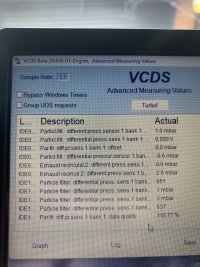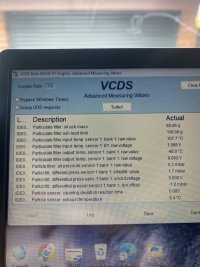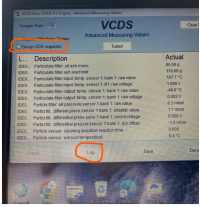Hi folks,
I appreciate I’ve already asked a heap
Of questions and to those who have tried to help me I appreciate your advice and guidance.
I am truly greatful and appreciate your patience…
My van is booked in at a bag specialist but like all good places there is a long wait. And so I’m continuing to try and work out the problem.
So
E of you have asked me for data from Vcds but I’m just not skilled enough with it to give the info requested , though I’ve tried a lot of times

The fault code I have in po299, underboost.
I’ve checked all the vac lines and tested that they hold vac, and get vac etc when running, all seem ok.
I did replace the n75 as allthough the line to turbo actuator held a good vaccum and the actuator seemed to be working correctly, the vac gauge seemed to flicker when I revved the engine rather than just go off then back on. (That’s seemed a little strange to me).
I’ve checked the turbo inlet and outlet, both are clean, the spindle has no play and moves freely.
The charge air cooler big elbows are also clean inside.
The egr was clear and clean, the solenoid and valve seems to work ok. I did change the egr inlet hose and gaskets.
I then moved onto the possibility that the cat or dpf may be blocked and causing a back pressure.
I removed and cleaned both and they seemed to run clear and freely .
Now that I’ve refitted the dog and cat, the underboost seems less frequent but last night in a test drive the cat got really really hot.
The exhaust tail pipe seems to have a low temp and not much pressure blowing out of it .
I took some readings on Vcds and the inlet and outlet temp don’t look right to me.
I let is 107° but outlet temp says -40° ? Which can’t be right.
I’ll try and post the pics below of what reading I manged to get.
My question is, first this suggest my dof is blocked (even more after flushing with wynnes fluid) or does it mean the sensors are duff.
If it is the sensors, now would that an effect the running of the van, the exhaust flow , and the temp at the cat? Would it? It would it just throw an engine light faukt up?
I haven’t got any fault
Codes come up, none in relation to dpf or cat?
I appreciate you guys have given me advice but I’m stuck in the place of not knowing how to use Vcds well, I can’t get any “specified” rates up to compare my readings to, and I’ve still got two/three weeks untill it’s in the garage with an expert.















